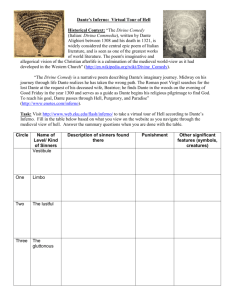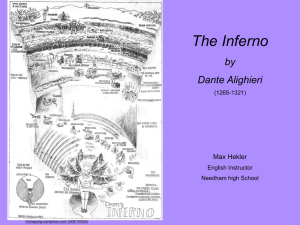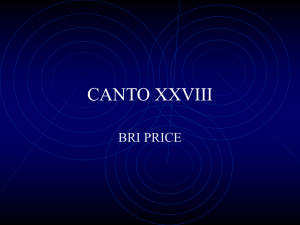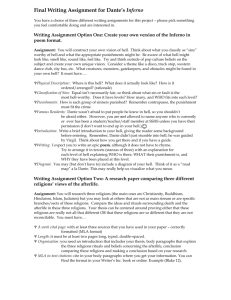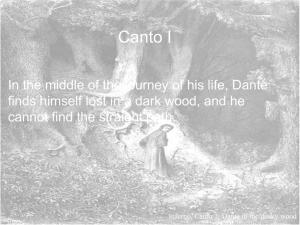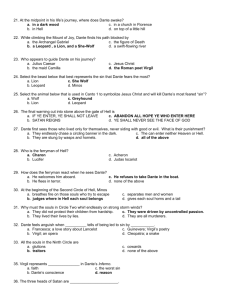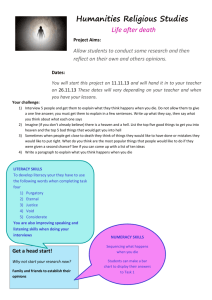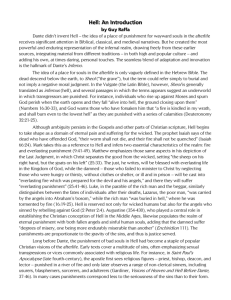Introduction to The Inferno
advertisement
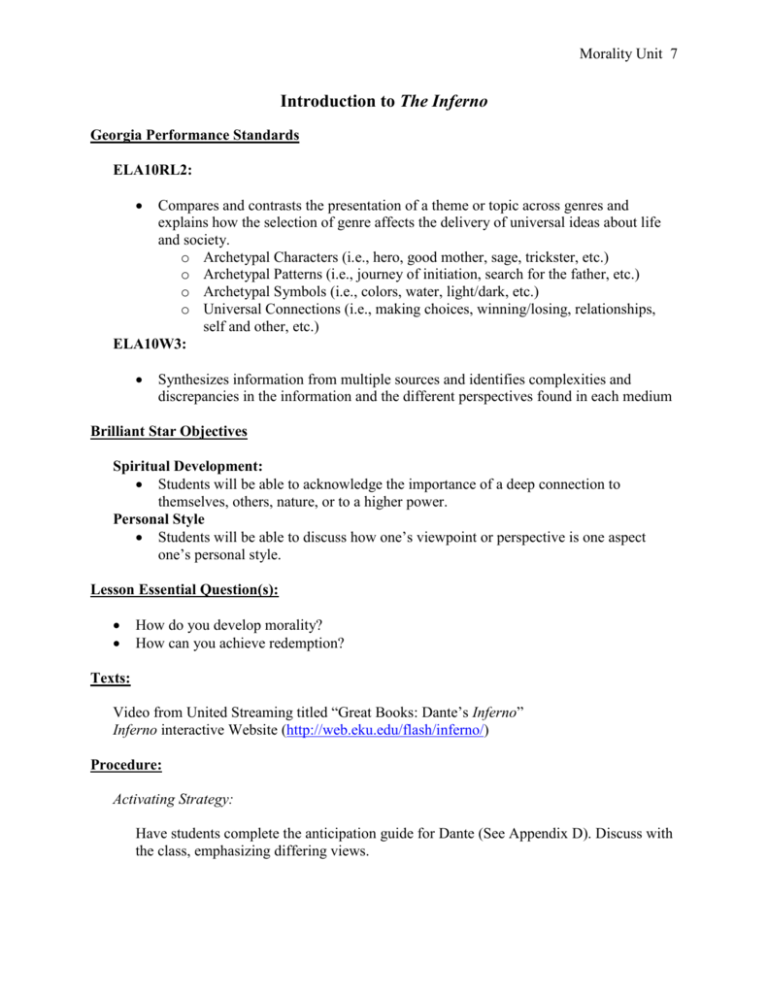
Morality Unit 7 Introduction to The Inferno Georgia Performance Standards ELA10RL2: Compares and contrasts the presentation of a theme or topic across genres and explains how the selection of genre affects the delivery of universal ideas about life and society. o Archetypal Characters (i.e., hero, good mother, sage, trickster, etc.) o Archetypal Patterns (i.e., journey of initiation, search for the father, etc.) o Archetypal Symbols (i.e., colors, water, light/dark, etc.) o Universal Connections (i.e., making choices, winning/losing, relationships, self and other, etc.) ELA10W3: Synthesizes information from multiple sources and identifies complexities and discrepancies in the information and the different perspectives found in each medium Brilliant Star Objectives Spiritual Development: Students will be able to acknowledge the importance of a deep connection to themselves, others, nature, or to a higher power. Personal Style Students will be able to discuss how one’s viewpoint or perspective is one aspect one’s personal style. Lesson Essential Question(s): How do you develop morality? How can you achieve redemption? Texts: Video from United Streaming titled “Great Books: Dante’s Inferno” Inferno interactive Website (http://web.eku.edu/flash/inferno/) Procedure: Activating Strategy: Have students complete the anticipation guide for Dante (See Appendix D). Discuss with the class, emphasizing differing views. Morality Unit 8 Acquisition Lesson: Begin the lesson by discussing the main ideas in The Inferno. Help students understand that the author, Dante Alighieri, claims that before achieving moral redemption, an individual must take a hard look at evil both in the world and in himself. Only by confronting inner evil can people achieve self-knowledge, which is the first step toward redemption. Dante also says that people should not be expected to make their journey alone; they need a guide to help them. For Dante’s own journey, as described in his book, he chose the poet Virgil to guide him through hell. Have students complete a quick write addressing the following questions. How does one develop and exhibit morality? Is it possible to achieve moral redemption? If not, why? If so, how? Presentation: Show students the video from United Streaming to summarize the story and to introduce Dante and his concepts of morality and redemption (See Appendix E). Formative Assessment: Quiz on understanding of ideas presented in video. The quiz is attached to the video segment in United Streaming. Group Work: Using the portable lab, students are to complete a guided map (graphic organizer) of Dante’s journey through hell. They will use the accompanying guide and the interactive site http://web.eku.edu/flash/inferno/ to better understand Dante’s dilemma and experiences. Formative Assessment: Oral questioning and observations performed during the group activity will form formative assessments for this lesson. Culminating Activity/Summative Assessment: Explain that the task is to develop a geography of hell based on each student’s life experiences. Have students decide which sins belong inside each circle of hell. If students think Dante’s circles are appropriate, they can use them. To complete their portrayal of hell, have students select a guide and brainstorm ideas about the meaning of moral redemption. Morality Unit 9 Tell students that they can draw their geography of hell on a piece of poster board or create it on the computer. Students should include two or three paragraphs describing the meaning of each circle, why that circle belongs in hell, the reason for selecting a particular guide, and an explanation of moral redemption. Students conclude the lesson by discussing what they learned from this activity. Did they find it relevant to their own experiences? What did students learn about themselves as a result of thinking about these issues? Rubric: Use the following three-point rubric to evaluate students’ work during this lesson. • 3 points: Students thought very creatively in developing their geography of hell; carefully selected an appropriate guide for the journey; and wrote clear, wellconstructed descriptive paragraphs. • 2 points: Students thought creatively in developing their geography of hell; selected a guide for their journey; and wrote adequate, somewhat-descriptive paragraphs. • 1 point: Students had difficulty developing their geography of hell; did not select a guide for their journey; and did not complete the descriptive paragraphs. Morality Unit 10 [Page intentionally left blank]

